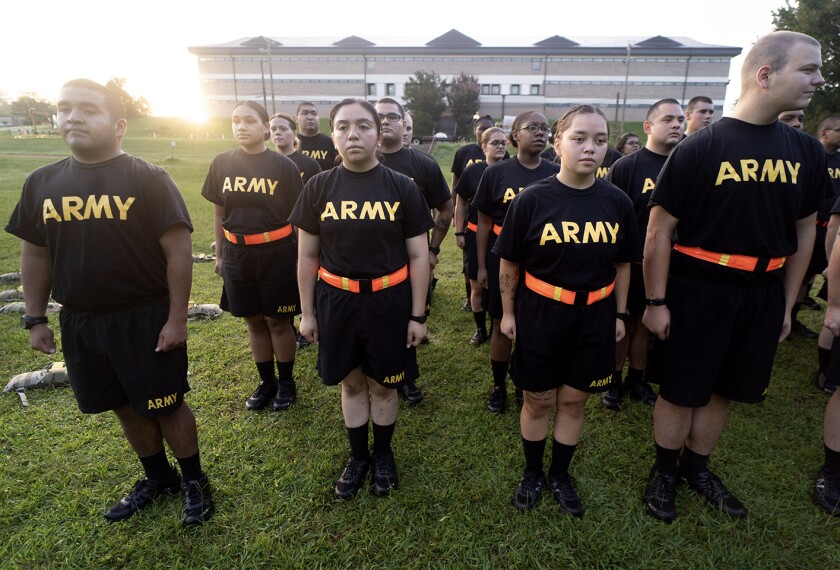Over the past decade, the most prominent school reform effort has been the development of the Common Core State Standards and their assessments, which were intended to support college and career readiness. However, during that same period, the world of work took a sharp, driverless turn. Start-ups with odd names like Uber and Lyft swiftly accelerated, upending urban transportation, creating millions of new jobs and eliminating others.
Armies of robots, already in factories and warehouses, are preparing to march into offices and hospitals. With artificial intelligence increasingly competing with human intelligence, what’s a student to do? And how might educators help them? If these prospects sound dark, perhaps we can light a path forward by studying young people who are already preparing themselves well for this uncertain future.

In this special collection of Commentary essays, professors, advocates, and futurists challenge us all to deeply consider how schooling must change—and change soon—to meet the needs of a future we cannot yet envision.
This special section is supported by a grant from the Noyce Foundation. Education Week retained sole editorial control over the content of this package; the opinions expressed are the authors’ own, however.
In 2014, as a fellow at the Institute for the Future in Palo Alto, Calif., I worked on a simple project to interview a small, diverse collection of individuals we called “extreme learners.” They met a single criterion: They loved to learn. Like extreme athletes, they were passionate and fearless. Instead of letting institutions define what and how they learned, they engineered their own personal ecosystems of learning and connected their learning to earning in creative ways.
The 11 extreme learners we identified were mostly in their teens and 20s and included a few mid-career and experienced professionals. As John Falk, an expert on informal learning at Oregon State University and one of our extreme learners, put it, “Everyone on this planet is hard-wired to learn, extremely, all the time. The first advice I give to any learner today is: You must take control over your own learning. The good news is, it’s easier today than it’s ever been.”
As a group, our extreme learners did not fit conventional definitions of “best and brightest,” as defined by high GPAs or test scores. Instead, they were opportunistic in finding places and people to learn with, using not only formal schooling but also informal learning centers, such as maker spaces and science centers. They engaged in authentic, experiential, project-based learning.
These extreme learners shared five habits, which can prove instructive as we look to prepare students for an unpredictable future:
1.) They were self-motivated and found connections between their learning and working, both volunteer and paid. Sixteen-year-old Thomas Hunt, for example, left high school after 9th grade and created his own home school, volunteering at an anti-aging center concerned with macular degeneration and atherosclerosis while taking community college classes. Another extreme learner, Lenore Edman turned her interests in paper crafts, sewing, and electronics into an online business.
2.) They maintained a strong sense of curiosity across disciplines, often spanning the arts and the sciences. They asked a lot of questions and volunteered for new experiences. Mollie Cueva-Dabkoski tried several high schools before settling on the Ruth Asawa School of the Arts in San Francisco, where she pursued her interests in Afro-Brazilian dance and creative writing. At the same time, she also worked on a research study with an entomologist at the California Academy of Sciences, studying beetles and biodiversity in the high altitudes of China’s Yunnan Province.
These learners are the type of students prized by many universities and companies: Students interested in a wide range of topics, and deeply knowledgeable in a few topics.
3.) They were networkers. They cultivated role models and mentors through face-to-face and online connections and participated in communities of like-minded individuals. Parents often supported their explorations. As a high school student, New Yorker Nikhil Goyal contacted a global network of mentors through email and Twitter, asking them to advise him on new models of learning. While still in high school, he wrote a book, One Size Does Not Fit All, and become an in-demand keynote speaker at education conferences.
4.) They were technology savants, accessing a vast world of online learning for resources, contacts, courses, platforms, and tools. They were digital producers as well as consumers, sharpening their coding and design skills to create websites, apps, and virtual-reality games. Reflecting on his 16 years of schooling spent “feeding facts into his forgetting machine,” Nick Winter studied learning theories and created an app for learning Chinese characters. Preetha Ram, a former dean at Emory University, designed a social learning platform where learners pose questions, receive help, and, in turn, help others.
5.) They developed their social-emotional skills, learning to work well in groups and taking on leadership and teaching roles. Faced with challenging personal circumstances, they became more resilient. With a background in computers, Marc Roth moved to San Francisco, but became ill and homeless for six months. At a maker studio space, he took courses, starting with 3-D printing. In turn, he taught others and developed his own three-month program to teach digital fabrication to the homeless, which was praised by then-President Barack Obama at the White House Maker Faire.
These extreme learners had an entrepreneurial spirit. While they may take on jobs in established companies, they will also do well in the “gig economy,” where self-starters fill in periods of underemployment. They developed that spirit as entrepreneurs of their own learning, seeking out projects, identifying supporters, and applying lessons from one experience to the next.
While today’s students will ride in driverless cars, they should begin now to take the steering wheel of their learning lives. The sooner schools and informal learning centers give them more freedom and flexibility to do so, the better their chances for thriving in careers we cannot now imagine.





